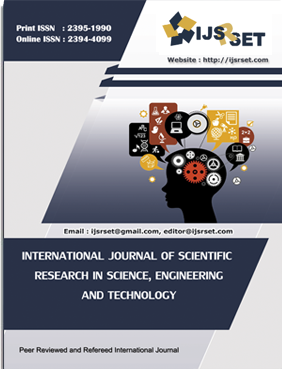Optimizing The Topological Working of Modern Transportation Systems in Smart Cities Using Mobius Strips
Abstract
Contemporary urban mobility networks are progressively strained by congestion, inefficient land use, and rigid infrastructure. With smart cities aspiring to adaptive and sustainable mobility, new design paradigms are crucial. This study proposes a topological framework drawn from the Möbius strip—a non-orientable surface with a single-sided continuous geometry—to reconsider transportation networks. Capitalizing on the special characteristics of the Möbius strip, the research formulates a model of continuous flow to eradicate intersections, U-turns, and bidirectional lane splits. A graph-theoretical model and SUMO-based simulations are utilized to devise and assess a Möbius-integrated transportation system. Comparative results relative to traditional systems demonstrate a dramatic improvement: a 28.6% decrease in travel time, 38.6% reduction in congestion, 27.8% increased vehicle throughput, and 38.1% improved lane capacity. Moreover, up to 18% energy consumption is minimized. All these outcomes prove that Möbius-inspired topologies have the potential to transform urban transport planning by maximizing fluidity, space, and sustainability—providing a promising, mathematically sound solution for smart cities of the future.
📊 Article Downloads
References
Oladimeji, Damilola, Khushi Gupta, Nuri Alperen Kose, Kubra Gundogan, Linqiang Ge, and Fan Liang. "Smart transportation: an overview of technologies and applications." Sensors 23, no. 8 (2023): 3880.
Tekler, Zeynep Duygu, Raymond Low, Chau Yuen, and Lucienne Blessing. "Plug-Mate: An IoT-based occupancy-driven plug load management system in smart buildings." Building and Environment 223 (2022): 109472.
Rehmani, Mubashir Husain, Alan Davy, Brendan Jennings, and Chadi Assi. "Software defined networks-based smart grid communication: A comprehensive survey." IEEE Communications Surveys & Tutorials 21, no. 3 (2019): 2637-2670.
Alam, Muhammad, Joaquim Ferreira, and José Fonseca. "Introduction to intelligent transportation systems." Intelligent transportation systems: Dependable vehicular communications for improved road safety (2016): 1-17.
Shen, Qing. "Urban transportation in Shanghai, China: problems and planning implications." International journal of urban and regional research 21, no. 4 (1997): 589-606.
Singh, Sanjay Kumar. "Urban transport in India: Issues, challenges, and the way forward." European Transport/Trasporti Europei (2012) Issue 52 (2012).
Farahani, Reza Zanjirani, Elnaz Miandoabchi, Wai Yuen Szeto, and Hannaneh Rashidi. "A review of urban transportation network design problems." European journal of operational research 229, no. 2 (2013): 281-302.
Bendsoe, Martin Philip, and Ole Sigmund. Topology optimization: theory, methods, and applications. Springer Science & Business Media, 2013.
Nayeri, Mohammad, Abbas Babazadeh, and Mehrdad Gholami Shahbandi. "Optimizing geometric and topological indices for sustainable mobility: a network design approach." Transportation (2025): 1-35.
Wu, Jianjun, Xin Guo, Huijun Sun, and Bo Wang. "Topological effects and performance optimization in transportation continuous network design." Mathematical Problems in Engineering 2014, no. 1 (2014): 490483.
Panteleeva, Margarita, and Svetlana Borozdina. "Mathematical model of evaluating the quality of “smart city” transport interchanges functioning." In E3S Web of Conferences, vol. 97, p. 01006. EDP Sciences, 2019.
Möbius, Klaus, Martin Plato, and Anton Savitsky. The Möbius Strip Topology: History, Science, and Applications in Nanotechnology, Materials, and the Arts. Jenny Stanford Publishing, 2022.
Salvucci, Richard J. "The Möbius Strip: A Spatial History of Colonial Society in Guerrero, Mexico." (2007): 588-589.
Kahlen, Franz-Josef, Shannon Flumerfelt, Anabela C. Alves, and Anna Bella Siriban Manalang. "The möbius strip of lean engineering and systems engineering." In ASME International Mechanical Engineering Congress and Exposition, vol. 56413, p. V012T13A062. American Society of Mechanical Engineers, 2013.
Fayyaz, Maryam, Gaetano Fusco, Chiara Colombaroni, Esther González-González, and Soledad Nogués. "Optimizing Smart City Street Design with Interval-Fuzzy Multi-Criteria Decision Making and Game Theory for Autonomous Vehicles and Cyclists." Smart Cities 7, no. 6 (2024): 3936-3961
Bin Hariz, Mohammed. "Optimizing Urban Mobility in Multi-Mode Transportation Systems." PhD diss., Université d'Ottawa/University of Ottawa, 2024.
Munawar, Adeel, and Mongkut Piantanakulchai. "Machine Learning‐Driven Passenger Demand Forecasting for Autonomous Taxi Transportation Systems in Smart Cities." Expert Systems 42, no. 3 (2025): e70014
Elassy, Mohamed, Mohammed Al-Hattab, Maen Takruri, and Sufian Badawi. "Intelligent transportation systems for sustainable smart cities." Transportation Engineering (2024): 100252.
Ahmad, Khaleel, Halimjon Khujamatov, Amir Lazarev, Nargiza Usmanova, Mona Alduailij, and Mai Alduailij. "Internet of Things‐Aided Intelligent Transport Systems in Smart Cities: Challenges, Opportunities, and Future." Wireless communications and mobile computing 2023, no. 1 (2023): 7989079
Kumar, Aman, Nishant Raj Kapoor, Harish C. Arora, and Ashok Kumar. "Smart Transportation Systems: Recent Developments, Current Challenges and Opportunities." Artificial Intelligence for Smart Cities and Smart Villages: Advanced Technologies, Development, and Challenges (2022): 116-143.
Zhang, Lei, Long Cheng, Fahad Alsokhiry, and Mohamed A. Mohamed. "A novel stochastic blockchain-based energy management in smart cities using V2S and V2G." IEEE Transactions on Intelligent Transportation Systems 24, no. 1 (2022): 915-922.
Yokuş, Asude, and Tolga Sayın. "Diagramming the Topology of Technology and Architecture in the 21st Century." Journal of Architectural Sciences and Applications 9, no. 2 (2024): 774-797.
Downloads
Published
Issue
Section
License
Copyright (c) 2025 International Journal of Scientific Research in Science, Engineering and Technology

This work is licensed under a Creative Commons Attribution 4.0 International License.




